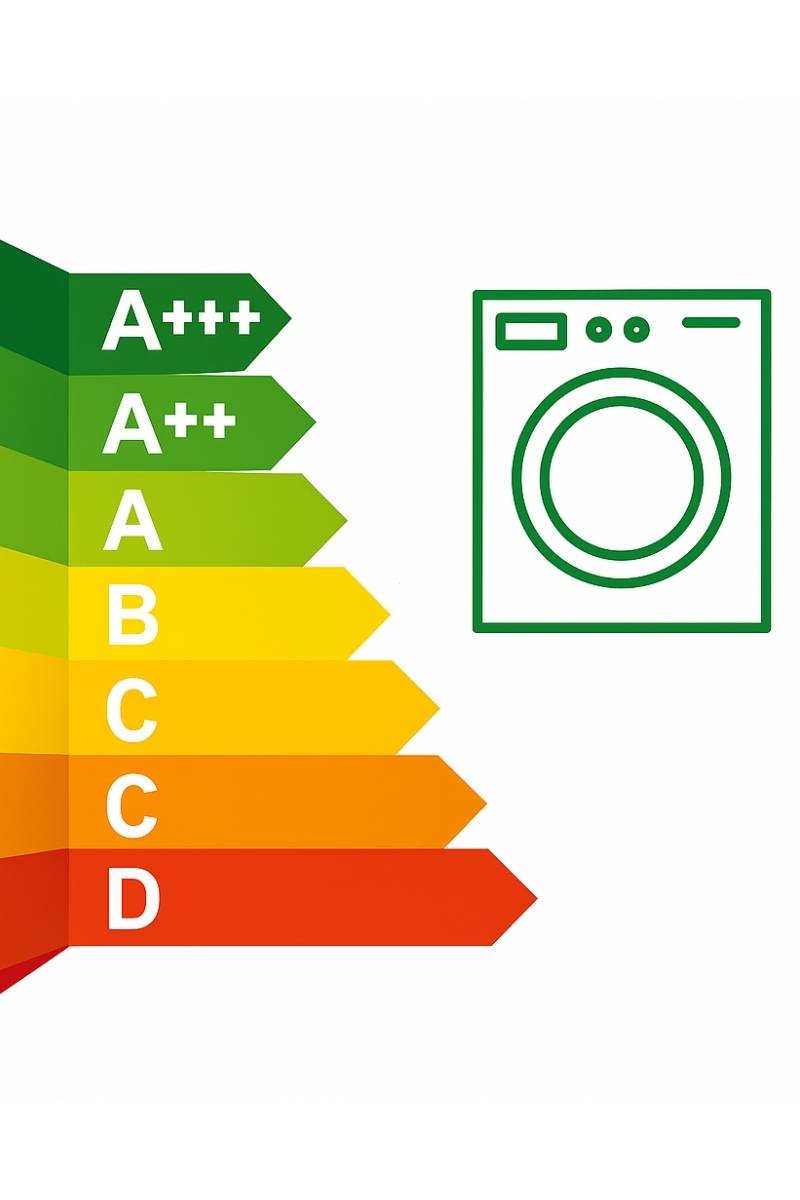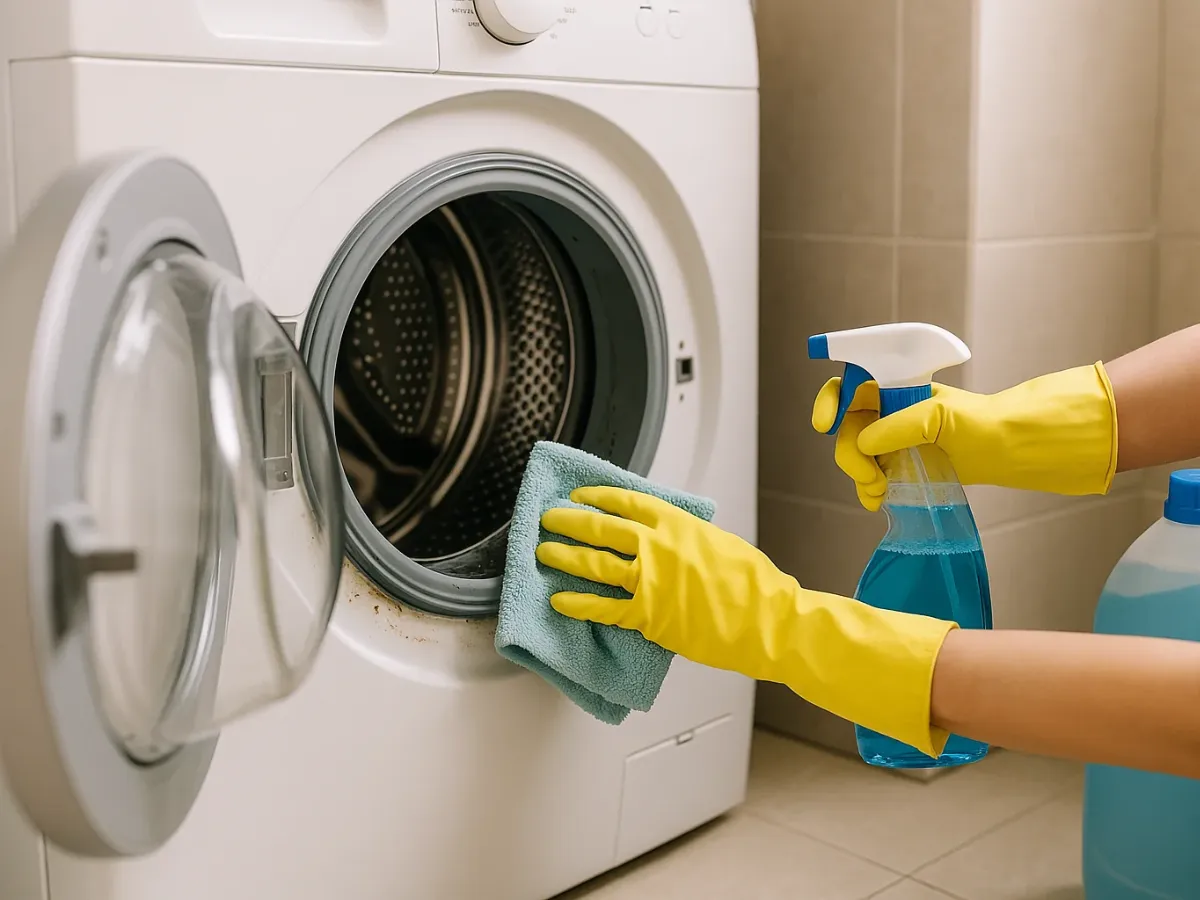Decoding the Label: Complete Guide to Energy Ratings in Washing Machines (A-G)

When buying a new washing machine, you face a sea of technical features, capacities, and prices. But there's one key visual element that stands out on all models: the energy rating label. That colorful sticker with letters from A to G isn't just decoration; it's a fundamental tool for understanding how much a washing machine consumes and making an informed decision that benefits both your wallet and the planet. But do you really know what each letter and symbol means?
Since March 2021, the European Union introduced a new, clearer, and more demanding energy label, eliminating the confusing A+, A++, and A+++ classes. In this comprehensive guide, we'll explain everything about the new washing machine energy ratings: how to read the current label (A-G), what each class implies, why choosing an efficient model is crucial, and how this information helps you save in the long run.
What Are Energy Ratings and Why Are They Important?
The energy label is a standardized system across Europe providing clear, comparable information about the energy and other resource (like water) consumption of household appliances. Its main objectives are:
- Inform the Consumer: Allows easy comparison of the efficiency of different models before purchase.
- Foster Efficiency: Encourages manufacturers to develop increasingly efficient products to reach higher classes.
- Promote Savings: Helps users choose appliances that consume less, reducing their electricity and water bills.
- Protect the Environment: Lower energy and water consumption means a smaller ecological footprint.
For washing machines, an appliance used frequently that consumes both electricity (especially for heating water) and water, choosing an efficient model can lead to considerable annual savings.
Goodbye A+++, Welcome A-G Scale: The New Energy Label
The most significant change introduced in 2021 was the rescaling of energy classes. The previous system (A+++, A++, A+, A, B, C, D) had become outdated, as most new products clustered in the top classes (A+, A++, A+++), making real differentiation difficult for consumers.
The new label returns to a more intuitive scale: from A (dark green, highest efficiency) to G (red, lowest efficiency).
Beware of equivalences! It's crucial to understand that the new scale is much stricter. A washer that was previously A+++ might now be a C or D class on the new label, without its consumption having changed. Simply put, the requirements for A or B class are now much tougher, leaving room for future efficiency innovations.
Decoding the New Energy Label of Your Washing Machine
Let's see what key information the current label provides, from top to bottom:
- QR Code: In the top right corner. Scanning it with your phone accesses the European database EPREL (European Product Registry for Energy Labelling), where you'll find more detailed technical information about that specific model.
- Manufacturer Name and Model: Clear product identification.
- Energy Efficiency Scale (A-G): The most visual part. A color scale from dark green (A) to red (G), with a black arrow indicating the class the model belongs to.
- Class A: Most efficient, lowest consumption.
- Classes B and C: Still very efficient, good options.
- Class D: Standard or medium efficiency.
- Classes E, F, G: Least efficient, highest consumption. Try to avoid if possible.
- Energy Consumption (kWh/100 cycles): Important novelty! It no longer gives an estimated annual consumption but the energy consumption in kilowatt-hours (kWh) per 100 wash cycles performed using the "Eco 40-60" program. This allows for a more realistic and direct comparison between models. The lower this number, the better.
- Maximum Load Capacity (kg): Indicates the maximum amount of laundry (in kg of dry cotton) the machine can wash in the Eco 40-60 program. Important to consider, as label consumptions refer to this load.
- Duration of "Eco 40-60" Program: Shows how long (in hours and minutes) this specific program takes to complete at maximum load. ECO programs are often longer but optimize consumption.
- Water Consumption (L/cycle): Indicates how many liters of water the washer consumes per cycle of the Eco 40-60 program at full load. Lower water consumption is better for your bill and the environment.
- Spin-Drying Efficiency Class (A-G): Measures the washer's ability to remove water from clothes at the end of the cycle. Based on residual moisture.
- Class A: Clothes come out very well wrung (less than 45% residual moisture).
- Class G: Clothes come out much wetter (more than 90% residual moisture).
- Why does it matter? Better spin efficiency (closer to A) means clothes will need less time and energy to dry afterwards, whether air drying or in a dryer. Learn more about what spin cycle is.
- Noise Emissions (Spin Phase): Indicates the noise level in decibels (dB(A)) during the spin cycle (the loudest phase). It also includes a Noise Emission Class (A-D), where A is the quietest and D is the loudest. Important if the washer is near resting areas.

The "Eco 40-60" Program: The Standard Reference
It's crucial to understand that the energy and water consumption values, as well as the duration shown on the label, refer exclusively to the "Eco 40-60" program. This program is designed to wash normally soiled cotton items declared washable at 40°C or 60°C, together in the same cycle. It's the most efficient cycle in terms of combined energy and water consumption.
If you use other programs (short, intensive, high temperature), your washer's actual consumption will differ (usually higher) from what's indicated on the label for the ECO cycle.
Why Choose an Efficient Washer (Class A, B, or C)?
Opting for a washing machine with a good energy rating (ideally A, B, or C on the new scale) offers multiple benefits:
- Direct Financial Savings: They consume less electricity and water per wash. Although the initial investment might be slightly higher, the savings on utility bills over the years (a washer's lifespan can exceed 10 years) often offset the price difference.
- Lower Environmental Impact: Reducing energy consumption helps decrease CO2 emissions and reliance on fossil fuels. Saving water is vital in a context of water scarcity.
- Advanced Technology: More efficient washers often incorporate modern technologies (quieter and more durable Inverter motors, load sensors adjusting water and time, auto-dosing systems...) that not only save but can also improve washing results and better care for clothes.
- Regulatory Compliance and Future-Proofing: Regulations are becoming stricter. Choosing an efficient model today ensures better performance and adaptation to future standards.
Beyond the Label: Additional Saving Tips
The machine's efficiency is important, but your usage habits also matter:
- Wash Cold: Tip #1. Most consumption comes from heating water.
- Full Loads: Optimize each cycle.
- Use ECO Programs: Even if longer, they are the most efficient.
- Spin at Max (Allowed): You'll save on drying.
- Maintain the Washer: Clean the filter and run cleaning cycles. A clean washer is more efficient. Discover how to clean inside your washer.
Check more energy saving tips on our blog.
Frequently Asked Questions about Energy Ratings
What is the best energy rating for a washing machine?
Class A on the new scale (A-G) is the best, indicating maximum efficiency.
What is a good energy rating for a washing machine?
Classes A, B, and C are considered good or very good in terms of efficiency.
What does class D mean on a washing machine?
It's standard or medium efficiency on the new scale. Consumes more than A, B, and C.
What does a+++ vs e mean?
Compares old and new scales. An old A+++ washer might now be C, D, E, or even F/G on the stricter new scale.
Understanding washing machine energy ratings is easier with the new A-G label. Paying attention to the efficiency class, kWh/100 cycles consumption, and water usage will allow you to choose a model that fits your needs, helps you save on bills, and is kinder to the environment. Invest in efficiency!
Professional Efficiency and Power at LaColada Ponferrada
At LaColada Self-Service Laundry Ponferrada, we are committed to efficiency. Our industrial washers and dryers are modern, low-consumption models designed to offer you professional results with the lowest possible energy and water impact. Wash and dry your clothes quickly, economically, and sustainably with us!
Discover LaColada's Efficiency!
Sebastián R.
More than 10 years at the helm of Lacolada Lavanderia Autoserivico Ponferrada and repairing industrial and domestic machinery in my spare time. You won't find unverified theories from the internet here, just real solutions tested by someone who gets their hands dirty every day.
Optimize Your Laundry

How to Clean Inside Your Washing Machine (Drum, Filter...)
Essential steps to keep your washer clean and efficient.

Removing Oil Stains Already Washed: Mission Possible
Tricks to eliminate those stubborn old grease stains.

Folding T-shirts Easily with the Marie Kondo Method
Save space and maintain order in your drawers.